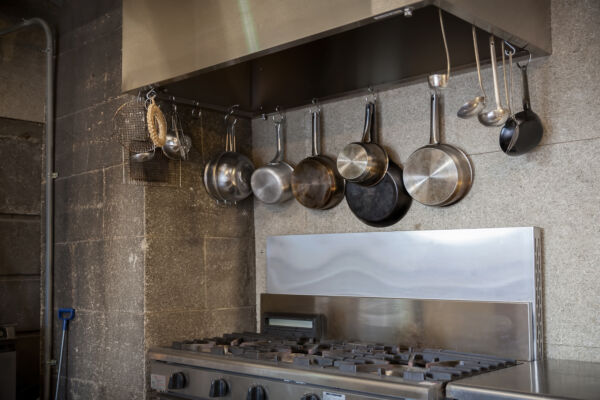For housewives or “home cooks,” pots are crucial kitchenware that affect the well-being and health of the family. Yet, have you ever wondered about the lifespan of your pots and when is the right time to replace them?
According to a report by the Huffington Post, Daniel Modlin, former editor of the American food and wine magazine “Food & Wine,” believes that home chefs should not spend too much on cookware. They can purchase reasonably priced pots and pans based on their cooking frequency without overspending.
Modlin suggested that for those who don’t cook frequently, high-end titanium stainless steel cookware is not a necessity. Cast iron pans are a good alternative for those concerned about the potential damage of Teflon materials. If you are on a tight budget, you can find quality cookware at extremely low costs through thrift stores or Facebook groups.
When purchasing pots and pans, consumers should inspect them on a flat surface to check for deformities, avoiding non-stick pots with scratches or peeling surfaces, and ensuring sturdy handles.
Maricel Gentile, the owner and chef of a restaurant and cooking school in New Jersey, talks about her use of various types of cookware at the restaurant and home – from durable high-end products to more affordable options. At home, she prefers pots that are not only practical but also aesthetically pleasing.
Gentile and Modlin detailed commonly used cookware and when they should be replaced. Gentile mentioned that her restaurant chefs use stainless steel pots, carbon steel, aluminum pots, and cast iron pots, while in her cooking classes, she lets students use ceramic-coated pots and non-stick pans.
She pointed out that for beginners, ceramic-coated pots are more suitable than carbon steel. These pots are great for cooking eggs, pancakes, and fish, easy to clean, but people should be cautious about non-stick pans produced before 2013.
Ceramic-coated pots are not made with Teflon, making them non-toxic so you don’t have to worry about chemicals mixing into your food.
According to manufacturers, ceramic-coated pots should be replaced every 2 to 5 years, depending on usage frequency and material quality. Gentile suggested replacing them every 1 to 3 years. If they have scratches, peeling, or worn coatings, it’s time for a replacement.
Gentile noted that aluminum pots should be replaced every 5 to 10 years. “If there are severe scratches, dents, or dark spots, it’s time to replace it,” she said.
She also cautioned that when cooking acidic foods like tomatoes in aluminum pots at high temperatures, aluminum may leach into the food. While daily exposure to aluminum is not harmful because the body doesn’t easily absorb this metal, it’s still advisable not to store food in aluminum pots. Although they are cheap, they are not as non-stick as other pans.
Gentile recommended that copper pots should be replaced every 10 to 20 years. Without a lining, they can react with acidic foods. If the lining (usually tin or stainless steel) wears out, it should be repaired or replaced.
Copper reacts with acids, and if copper pots come into contact with acidic food, copper may seep into the food, which can lead to symptoms like diarrhea and nausea when ingested in small amounts. However, as long as the tin and stainless steel linings are intact, cooking with copper pots is safe. Copper is expensive, visually appealing, and has good heat conductivity.
Modlin concluded by advising people not to throw away old cookware when they reach the end of their lifespan. Instead, they should recycle them. Aside from non-stick pans, other types of cookware can be recycled. Many non-stick cookware manufacturers offer recycling options where they remove the coating from the pan and recycle the metal.
Some of Modlin’s best cookware finds were purchased from thrift stores, performing better than cheaper new cookware. “Saving money, better cooking, and giving high-quality cookware a new life. A win-win situation!”

